Best Camera for Photography 2025: Every Style, Skill Level & Budget
Rent film gear from local filmmakers.

Rent film gear from local filmmakers.
Got an urgent need to pick up a camera and start shooting?
From life-altering war photos to beautiful portraits – your inner Annie Leibovitz is dying to come out.
To help you along the way, we've gathered a list of 15 of the best cameras for photography.
Depending on what you want to shoot, you need different features. So, we've gathered cameras that'll be perfect for documenting your travel adventures, capturing beautiful landscapes and everything in between, including many well-rounded cameras ideal to suit all manners and styles of photography.
Want to learn everything you need to know about photography. Head over to our article for photography 101.
Now, let's talk cameras.
Best camera to get started with photography
1. Fujifilm X-S10

The first camera on our list best suited for photography is the Fujifilm X-S10 – a versatile little all-rounder for hobbyist photographers.
In terms of performance, this camera is a proper blend. The Fujifilm X-S10 offers good features, ease-of-use and works for both stills and video.
With the X-S10, you'll be shooting with a 26.1MP APS-C sensor and IBIS (which is quite impressive once you see the size of this thing).
Moreover, it carries a handy vari-angle screen, excellent quality build and impressive 4K shooting capabilities. The small and compact body makes it ideal for travel and street photography. However, do be aware that it's not weatherproof.
Key features
- Sensor size: APS-C
- Resolution: 26.1MP
- Viewfinder: 2.36m dots
- Monitor: 3-inch articulating touchscreen, 1.04m dots
- Autofocus: 425-point hybrid AF
- Maximum continuous shooting rate: 8fps (mechanical), 20fps (electronic shutter)
- Video: 4Kat 30p
2. Olympus OM-D E-M10 Mark IV
If you're looking for the best camera for photography beginners, you've just found your new partner-in-crime.
See, as a photography rookie, you don't want to start on third base. No, you want a camera that's easy to use while also offering excellent imaging capabilities. Lucky for you the Olympus OM-D E-M10 Mark IV is about as stuffed with excellent features as a thanksgiving turkey.
The camera carries a 20MP Live MOS sensor, improved 5-axis IBIS, making it possible to shoot with slower shutter speeds without blurring the image through camera shake, and a helpful flip-down and tiltable monitor. With 4K UHD video capabilities and good ergonomics, this camera is one of the best entry-level cameras for photography on the market today.
Moreover, the E-M10 Mark IV is a Micro Four Thirds camera, meaning it has one of the most extensive selections of lenses around – plenty of options for you to choose from.
On the downsides of things, it lacks a microphone USB-C port, it only bursts 5fps, and its MFT sensor is smaller than APS-C.
Key features
- Sensor size: Micro Four Thirds
- Resolution: 20.3MP
- Viewfinder: 2,360K dots
- Monitor: 3-inch tilting touchscreen, 1,037K dots
- Autofocus: 121-point Contrast Detection AF
- Maximum continuous shooting rate: 15fps
- Movies: 4Kat 30p
3. Sony A6100
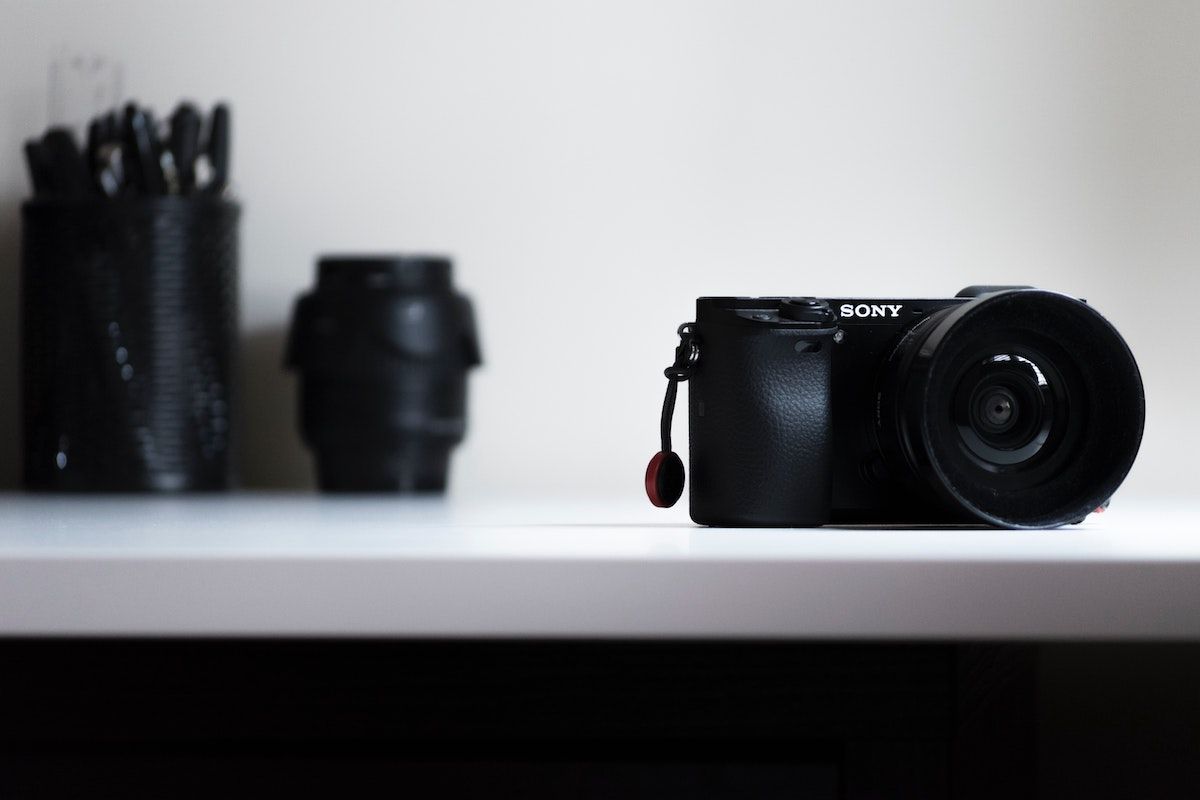
The Sony A6000 turned out to be a massive success for all entry-level photographers. Now, its predecessor, the Sony A6100, stands ready, and Sony has s the same recipe but added a few spicy tweaks and a pinch of new delicious features.
The Sony A6100 is a compact mirrorless camera that carries a bunch of beginner-friendly features. These features include a 24.2MP APS-C crop sensor (the same sensor as in some of Sony's premium cameras), excellent image quality, good dynamic range at its base ISO and a good noise handling capability at its higher ISOs.
This entry-level camera is also well-built, feels comfortable to handle and is easy to use to evenly spaced physical controls.
What's more?
The A6100 has a great autofocus system that manages to keep subjects in focus – regardless of whether you're shooting stills or video.
Now, what the Sony A6100 can't offer you, is in-body image stabilization. Meaning, if you want to avoid blurry images due to camera shakes, you will have to invest in a proper lens that can handle that. Moreover, the menu system is a bit complicated, so it might take you some time to get the hang of features such as low-res LCD and EVF.
Despite these downsides, this camera remains one of the best cameras for photographers on a budget.
Key features
- Type: Mirrorless
- Sensor size: APS-C
- Resolution: 24.2MP
- Lens: Sony E-mount
- Viewfinder: EVF
- Screen type: 2.95-inch tilting touchscreen, 921,600 dots
- Maximum continuous shooting speed: 11fps (mechanical)
- Movies: 4K
4. Nikon Z5
The Nikon Z5 is ideal for photographers who want to go with a larger sensor. The Z5 is, in general, a great camera – 24.3MP that produces vibrant, sharp, and clean images, a reliable autofocusing system and a solid, comfortable handle and body.
What's not to like?
Moreover, if you're a fan of its high-end siblings, the Nikon Z6 and Z7, you'll be glad to know that the Z6 comes with the same high-resolution viewfinder as these.
Furthermore, it carries twin card slow and 4K UHD video capabilities, taking a few pointers from some of its professional camera-buddies. The Z5 is fully weather-sealed and contains 5-axis IBIS. So, if you're looking to take the shot with a bit more advanced camera for photography, the Nikon Z5 is an excellent place to start.
With that said, its maximum rate is somewhat underwhelming, topping at 4.5fps, so it won't work if you're an action shooter. Moreover, the crop applied to 4K video might work out pretty frustrating if you want to get into vlogging.
Key features
- Type: Mirrorless
- Sensor size: Full-frame
- Resolution: 24.3MP
- Viewfinder: 3.69million dots
- Screen type: 3.2-inch tilting touchscreen, 1.04m dots
- Maximum continuous shooting speed: 4.5fps
- Movies: 4K/30p
5. Canon EOS 250D
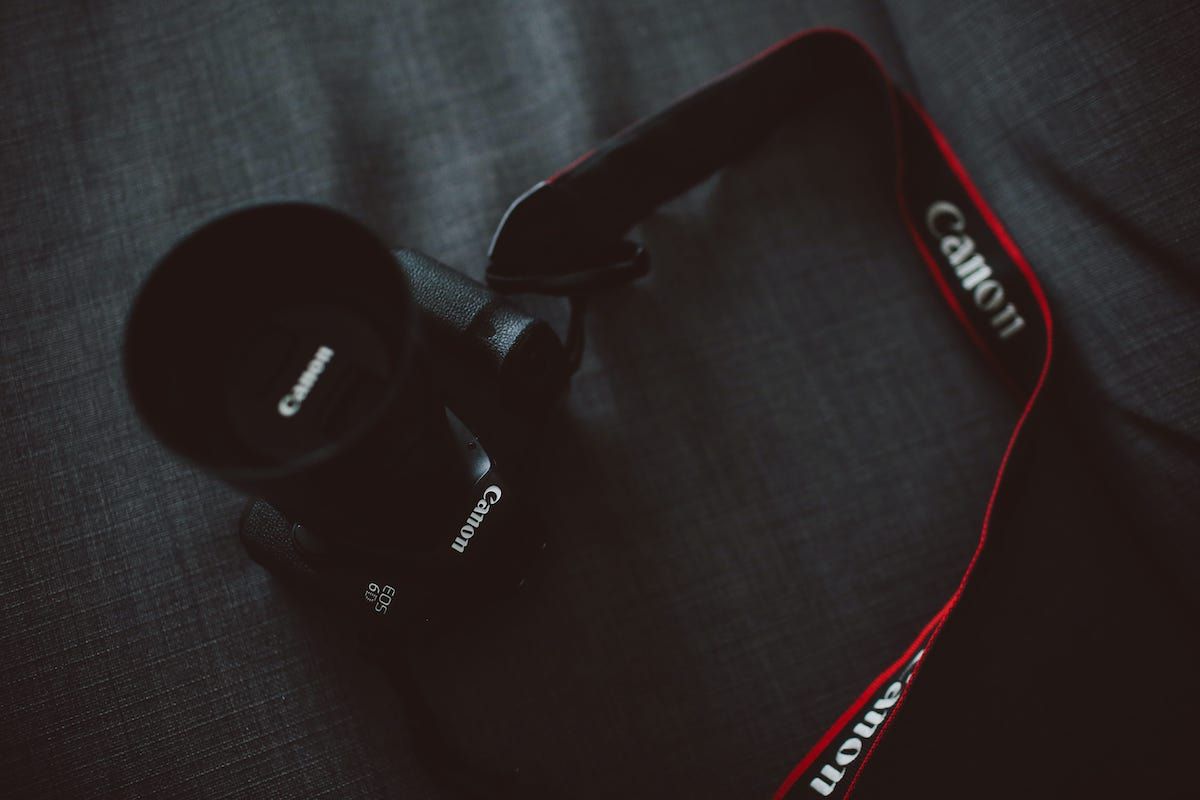
Being a DSLR camera, the Canon EOS 250D is one of the best cameras for photography if you're just getting started. DSLRs are, in general, a great camera to learn the photography ropes – the EOS 250D is no exception as it's super beginner-friendly and easy to use.
Its APS-C sensor produces gorgeous images and can even provide you with 4K video.
Moreover, you'll find plenty of lens options for this camera, so you can pair it with precisely the lens that suits your shooting purpose the best. Good lens fits could be the Canon EF-S 18-55mm f/4-5.6 IS STM or the Canon EF-S 18-135mm f/3.5-5.6 IS STM.
The main problem with the Canon EOS 250D? It simply has a hard time keeping up with all the specs that a mirrorless can offer.
Key features
- Type: DSLR
- Sensor size: APS-C
- Resolution: 24.1MP
- Lens mount: Canon EF-S
- Monitor: 3-inch tilting touchscreen, 1,040,000K dots
- Viewfinder: Yes, optical
- Continuous shooting: 5fps
- Movies: 4K UHD at 25p
Best cameras for intermediate photographers
1. Fujifilm X-T4

The Fujifilm X-T4… the best all-rounder camera for photography enthusiasts?
I think so!
Granted, the X-T4 is not a full-frame camera, yet it is one of the best APS-C cameras you can get your hands on as of right now. Building on its predecessor, the Fujifilm X-T3s impressive features, Fujifilm has been busy playing bob the builder and added some in-body image stabilization, faster burst shooting and design tweaks, here among a fully articulating touchscreen that'll knock your socks off.
However, like any ambitious building titian, Fujifilm didn't stop building as they reached the rooftop; they kept improving and added a bigger battery, which keeps it going for 500 shots per charge, improved autofocus and some rather incredible resolution.
Its 26MP APS-C sensor remains class-leading for still photography while also offering superb video recording. Finally, the X-T4 range of X-series lenses makes this camera a great, smaller alternative for those looking for a mirrorless all-rounder.
Its main issue? It doesn't include a headphone jack and has a somewhat limited video recording.
Key features
- Sensor size: APS-C
- Resolution: 26.1MP
- Viewfinder: 3,690K dots
- Monitor: 3.0-inch tilt-angle touchscreen, 1,620K dots
- Autofocus: 425-point AF
- Maximum continuous shooting rate: 15fps (mechanical shutter), 30fps (electronic)
- Movies: 4Kat 60p
2. Canon EOS R5
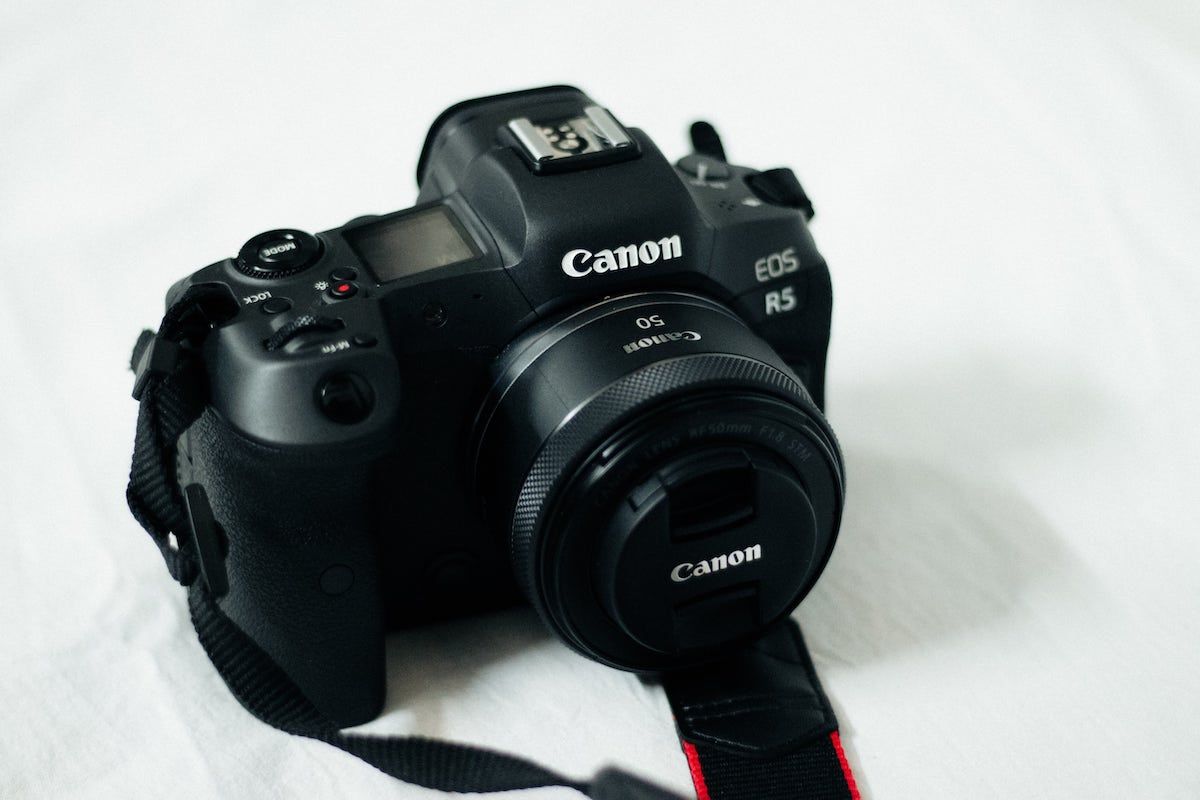
Looking to shoot mind-blowingly high-resolution, out-of-this-world-great stills? Then this fine hybrid camera is an ideal choice. Whether you're shooting wildlife or studio work, the Canon EOS R5 impress.
The EOS R5 has an incredible 45MP sensor that produces images with astonishing detail, uncropped 8K RAW video capabilities at up to 29.97fps in 4:2:2 12-bit Canon Log or HDR PQ (both H.265) – this is the kind movies are made of.
Even more noteworthy is EOS R5's class-leading autofocus system, which offers very accurate and reliable subject detection and tracking, with a whopping 5,940 AF points for photography and 4,500 for video.
With the Canon EOS R5, you'll also get 5.76-million-pixel EVF, a body design that'll fit like a Karl Lagerfeld glove – especially if you're coming from DSLRs. And it can shoot bursts at 12fps with its mechanical shutter or 20fps with its electronic equivalent.
Without a doubt, this camera is here to impress; it does, however, struggle with some video limitations as well as its CFExpress card can be costly to obtain.
Still, with a growing collection of RF lenses, the Canon EOS R5 is the next-gen mirrorless camera pro photographers have waited for.
Key features
- Type: Mirrorless
- Sensor size: Full-frame CMOS
- Megapixels: 45MP
- Autofocus: 5,940-zone AF
- Screen type: 3.15-inch tilting touchscreen, 2.1m-dots
- Monitor: 3.15-inch fully articulating touchscreen, 2,100k dots
- Continuous shooting speed: 12fps mechanical shutter, 20fps electronic shutter
- Viewfinder: 0.5-inch OLED EVF, 5,690k dots, 100% coverage
- Max video resolution: 8K DCI or UHD at 30p
3. Nikon Z7 II
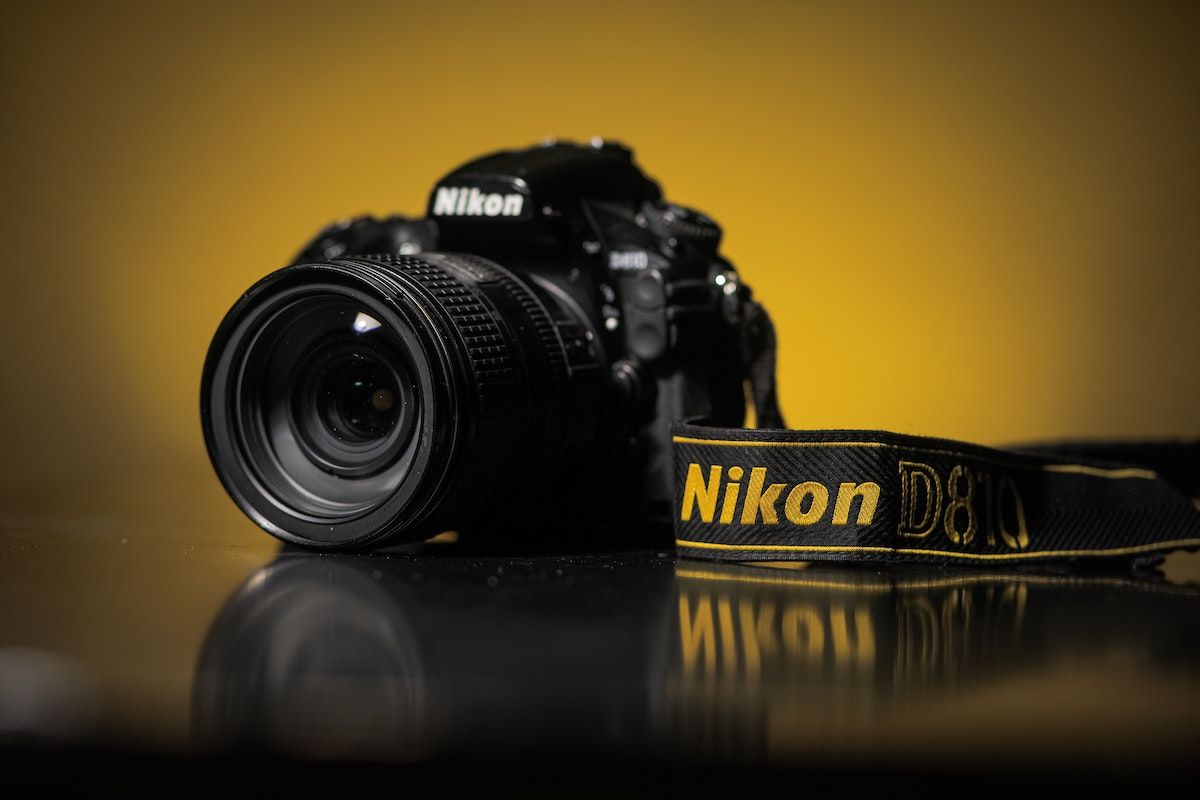
One of the best cameras for intermediate Nikon photographers – period.
The Z7 II is a full-frame mirrorless camera that combines some of Nikon's signature handling with an excellent 45.7MP full-frame sensor, speedy burst shooting and high-quality 4K video at 60p. This camera has been designed to woo photographers… and so it does.
With the Nikon Z7 II, you'll get class-leading dynamic range, sharp edge-to-edge detail and a handy 19MP APS-C crop mode – which is incredible for all sports and wildlife shooters.
Sure, sure. The Z7 II might not create big "8K" headlines, but on the other hand, it is also a bit more "approachable" in terms of handling and pricing.
And not to forget – the Z7 II is perfectly capable of making headlines – being an impressive all-around camera for photography. For any photographer who wants to produce awe-inspiring images, this camera is a dream.
Any nightmares about the Z7 II? Sure, they're hard to escape. In Nikon Z7 IIs case, it's the monitoring situation, which is rather disappointing. With an LCD screen that only tilts and isn't fully articulated and an EVF that's lower resolution than some rival cameras… yeah… it does have its downsides. Nevertheless, it remains one of the best cameras for photography – for pro and enthusiast shooters.
Key features
- Type: Mirrorless
- Sensor: Full-frame CMOS
- Megapixels: 45.7MP
- Autofocus: 493-point AF
- Maximum continuous shooting speed: 10fps
- Movies: 4K UHD at 60p
- Lens mount: Nikon Z
- Viewfinder: EVF
- Monitor: 3.2-inch tilting touchscreen, 2,100,000 dots
4. Panasonic Lumix S5

For anyone looking for a small full-frame camera capable of shooting a mix of high-quality video and stills… you've just found your next camera.
Although the S5 is significantly smaller than its sibling, the GH5 – S5 is incredible when shooting video. It offers an uncropped 4K video recording at 30p mode and other high-end specs, including V-log recording and Dual Native ISO.
Granted, seeing as the Lumix S5 has a modest burst shooting rate of 7fps, it's not the best choice for sports or action photography. However, its 6K photo mode compensates for this flaw (to some degree). More importantly, it offers excellent image quality and a much-improved autofocus system.
This camera is excellent for photography as it carries a perfect blend of size, high performance, and great video features. Finally, if you need that last convincing kick, it's packed with easy-to-use controls.
Key features
- Type: Mirrorless
- Sensor size: Full-frame
- Resolution: 24.2MP
- Viewfinder: 2.36million dots
- Screen type: 3.0-inch vari-angle touchscreen, 1.84m dots
- Maximum continuous shooting speed: 7fps (mechanical shutter), 30fps (6K photo mode, 18MP)
- Movies: 4K/60p 10-bit 4:2:0
5. Canon PowerShot G1 X Mark III
The Canon PowerShot G1 X Mark III is a compact wonder camera. And before you go worrying about its small sensor – aka less dynamic range, poor low light performance and overall bad image quality – rest assured, the story of PowerShot G1 X Mark III contains an entirely different plot.
The G1 X Mark III carries an APS-C sensor… a tine-tiny sensor. However, despite its size, it has no problems with performance, and it's the type of camera that truly makes the most of what it got. In the end, it provides you with beautiful, sharp images and an impressive Full HD video – albeit without 4K capabilities.
The camera is fully weather-sealed and contains a high-quality electronic viewfinder.
However, its lens is poor. It has a focal range of 24-72mm and a maximum aperture range of f/2.8-5.6. Of course, this is not going to be a problem unless you're shooting subjects far away, in low lighting, or want to produce images with a shallow depth of field.
Key features
- Type: Mirrorless
- Sensor size: APS-C
- Resolution: 24.2MP
- Lens: 24-72mm equivalent f/2.8-5.6
- Monitor: 3-inch vari-angle touchscreen, 1,040,000 dots
- Viewfinder: EVF, 2,360,000 dots
- Max burst speed: 9fps
- Movies: Full HD
Best cameras for professional photographers

1. Canon EOS R6
Hands down one of the best cameras for photography you can get today.
It is a piece of impressive, snappy machinery that'll do a number on your photos. The EOS R6 carries a class-leading autofocus system, superb in-body image stabilization system and burst shooting powers that'll knock your wildlife and sports photography out of the park.
It does lack the ability to DCI 4K and has some overheating issues – but for you – a still photographer, oh my, it's perfect.
Its autofocus, handling and features, makes the EOS R6 one of the best cameras for photographers looking for a full-frame camera. You could argue that its 20.1MP is just a smidge too low. However, if you're not planning on printing your images for the Times Square billboard, you should be all good.
Key features
- Type: Mirrorless
- Sensor size: Full frame
- Autofocus: 6,072-point AF
- Maximum continuous shooting rate: 12fps (mechanical shutter), 20fps (electronic)
- Movies: 4K UHD at 60p
- Resolution: 20.1MP
- Lens: Canon RF
- Monitor: 3-inch fully articulating touch display, 1,620,000 dots
- Viewfinder: 0.5-inch OLED EVF, 3,690,000 dots, 100% coverage, 0.76x magnification, 120fps refresh rate
2. Sony A7R IV

Calling all landscape photographers – this is your time to rejoice. With high resolution, high dynamic range and weatherproofed, this camera is ideal for photographers alike.
The Sony A7R IV has a 61MP sensor that delivers excellent detail – the highest resolution yet in a full-frame camera – which you can further bump up with its Pixel Shift mode (note, there's no motion correction in Pixel Shift mode). With this incredible camera, you'll also get excellent Face and Eye AF tracking for human subjects – a feature that really catches the eye… get it?
Combine that with stellar 4Kvideo capabilities, 10fps continuous shooting speed, out-of-this-world autofocus system and an in-body 5-axis image stabilization... you got quite a camera-beasts in your hands.
The AR7 IV has a comfortable grip, which means it's nice to use for long days in the field. The camera also carries a bright, sharp 5.76 million-dot electronic viewfinder. However, the touchscreen here is a bit limited compared to other Sony cameras.
Lastly, but certainly not least, the AR7 IV has a broad range of lenses available – both from Sony itself and third-party manufacturers.
Key features
- Type: Mirrorless
- Resolution: 61MP
- Viewfinder: 5,760K dots
- Autofocus: 567 PDAF + 425 CDAF
- Movies: 4Kat 30p
- Sensor: Full-frame CMOS
- Lens mount: Sony FE
- Screen: 3-inch tilting touchscreen, 1,440,000 dots
- Viewfinder: Electronic, 5.76m dots
- Continuous shooting speed: 10fps
3. Sony A1
Another one… DJ Khaled… wait, no, that's not it.
Another one… a Sony camera on our list for the best camera for photographers.
The Sony A1 is one of the brands' most versatile pro-cameras they've ever made. And, of course, that demands a spot on our list of the best camera for photography. This camera carries a solid combination of high-res stills, 8K video and blistering speed. Take it to a quiet day in the studio, on a Safari adventure or a high-energetic Dwayne Johnson workout… it can handle it all.
The A1 has a continuous frame rate of 30fps, a sensor resolution of 50.1MP, and an extremely rapid and robust hybrid autofocus. While the screen is only average… 9.44 million dot OLED EVF, the A1 surely compensates for its lack with a 240fps refresh rate.
If you're looking for a camera that's good for some specific purpose, this might be a bit of an overkill. There's plenty of excellent cameras that are specialized in, for example, sports photography or landscape. On the other hand, if you're looking for a camera that does it all. Look no further.
The Sony A1 is the best all-rounder high-end camera for photography.
Key features
- Sensor size: Full-frame
- Resolution: 50.1MP
- Viewfinder: OLED EVF, 9.44m dots
- Monitor: 3.0-inch tilt-angle touchscreen, 1.44m dots
- Autofocus: 759-point phase-detection AF
- Maximum continuous shooting rate: 30fps
- Movies: 8K at 30p
4. Panasonic Lumix GH5 II
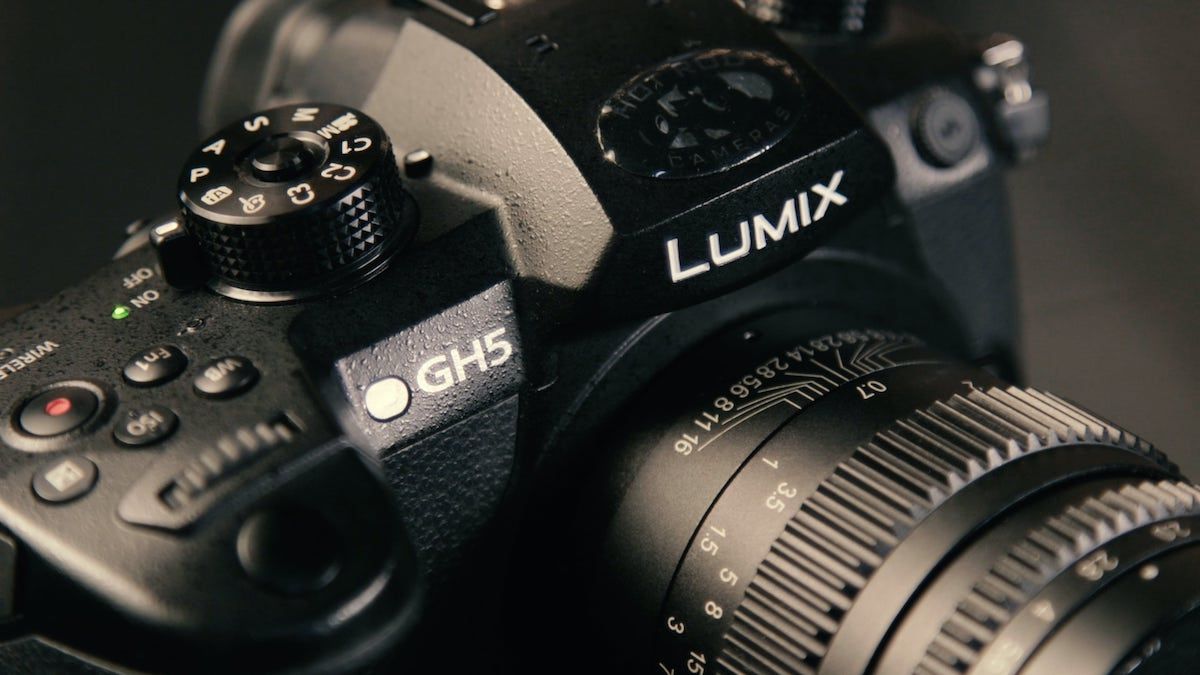
While its predecessor, the GH5, became the ideal consumer video camera, the Lumix GH5 II has been given a bit of a makeover… one that is photography friendly.
Sure, there's no reinvention of the wheel, but the Lumix GH5 does make a compelling argument as to why this camera should be in the running for becoming America's next super camera.
The Panasonic Lumix GH5 II has excellent 4K video capabilities at 60p, V-Log L profile, VFR, 10-bit internal recording and more. Sure, these are primarily prudent for video shooters.
Still, when it comes to the photography game, the GH5 II doesn't slow down. With 20MP at up to 12fps, and offers a big stills buffer capacity. Its sensor is pretty smaller than full-frame or APS-C; despite that, the GH5 II carries a pack of features that'll compensate for that, including an impressive 6.5 in-body image stabilization.
Key features
- Type: Mirrorless
- Sensor size: Micro Four Thirds
- Resolution: 20.3MP
- Lens mount: Micro Four Thirds
- Viewfinder: EVF
- Monitor: 3-inch vari-angle display, 1,840,000 dots
- Max burst speed: 12fps
- Movies: 4K
5. Sony Alpha A7 IV
Sure enough, the last camera on our list is the Sony Alpha A7 IV… because, what else, right?
This is an incredible camera, sporting a 33MP sensor and incredible buffer capacity. It shoots at 10fps for 828 consecutive uncompressed RAW + JPEF files… 828?
Pair this camera with Sony's acclaimed autofocus and improvements across the board, and you got yourself a mirrorless camera that's nothing less than remarkable.
Key features
- Type: Mirrorless
- Sensor: Full-frame
- Megapixels: 33MP
- Lens mount: Sony E-mount
- Monitor: 3in fully articulating touchscreen, 1,040k dots
- Viewfinder: EVF, 2.36m dots
- Max burst speed: 10fps
- Movies: 4K
What to consider in a camera for photography
So, what makes a camera the best?
The criteria for the best camera for photography all depends on one thing… you. However, there are a couple of things you should consider.
Let's do a quick rundown of what features to look out for in a good photography camera.
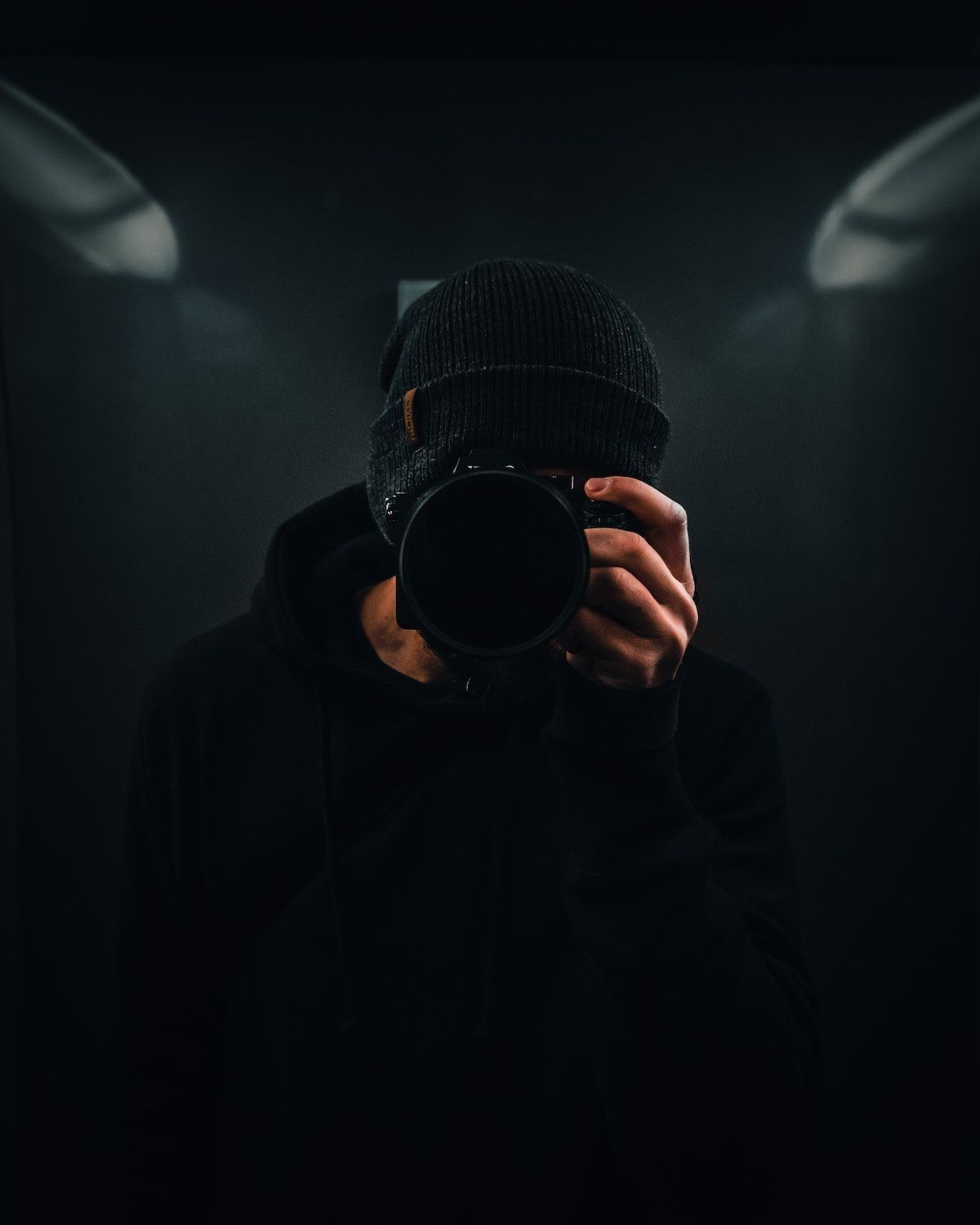
1. Appropriate sensor size
Larger doesn't always equal superior. It does, however, indicate which type of camera it is and who should use that camera.
As a rule of thumb, Micro Four Thirds and APS-C cameras are aimed at a mix of hobbyists and professional shooters, whereas full-frame models tend to be solely aimed at expert and advanced photographers.
2. Ease of handling
If you're considering a longer lens, then a good and comfortable grip is essential.
3. Type of lenses available
You've might heard this before, but lenses are one of the most image altering assets when it comes to photography.
For example, prime lenses are great for portraits and street photography, whereas wide-angle zooms are better for landscape photography.
Deciding which camera system, including lenses, is often better for you than choosing a camera in isolation.
4. Understand the different camera types
Overall, you got three different options for photography: a compact camera, a mirrorless and a DSLR.
Each camera type carries its features and target groups.
Compact cameras
The compact camera has a fixed lens on its front, meaning – the focal length and maximum aperture you see on the box… that's what you get! While this does limit versatility, it increases simplicity and convenience. For the same reason, these types of cameras are typically aimed at beginner photographers.
Mirrorless cameras
The mirrorless camera has no optical viewfinder; however, it also allows a small and light camera. Mirrorless cameras are where the most exciting advancements in camera technology are happening, especially in terms of video. They run the gamut from entry-level to high-end professionals.
DSLR
The DSLR is bulkier and heavier than its counterpart – the mirrorless, and this also means that they tend to be more complex and better weather-sealed. These types of cameras also contain an internal mirror system that allows for the fielding of an optical viewfinder, meaning you can see what you're shooting.
5. Know what you're shooting
The main thing to consider is, what are you shooting?
Different shooting purposes require different specs. Some will need fast burst speeds, and others bulletproof weather sealing. And some need to be convenient, portable compact and versatile.
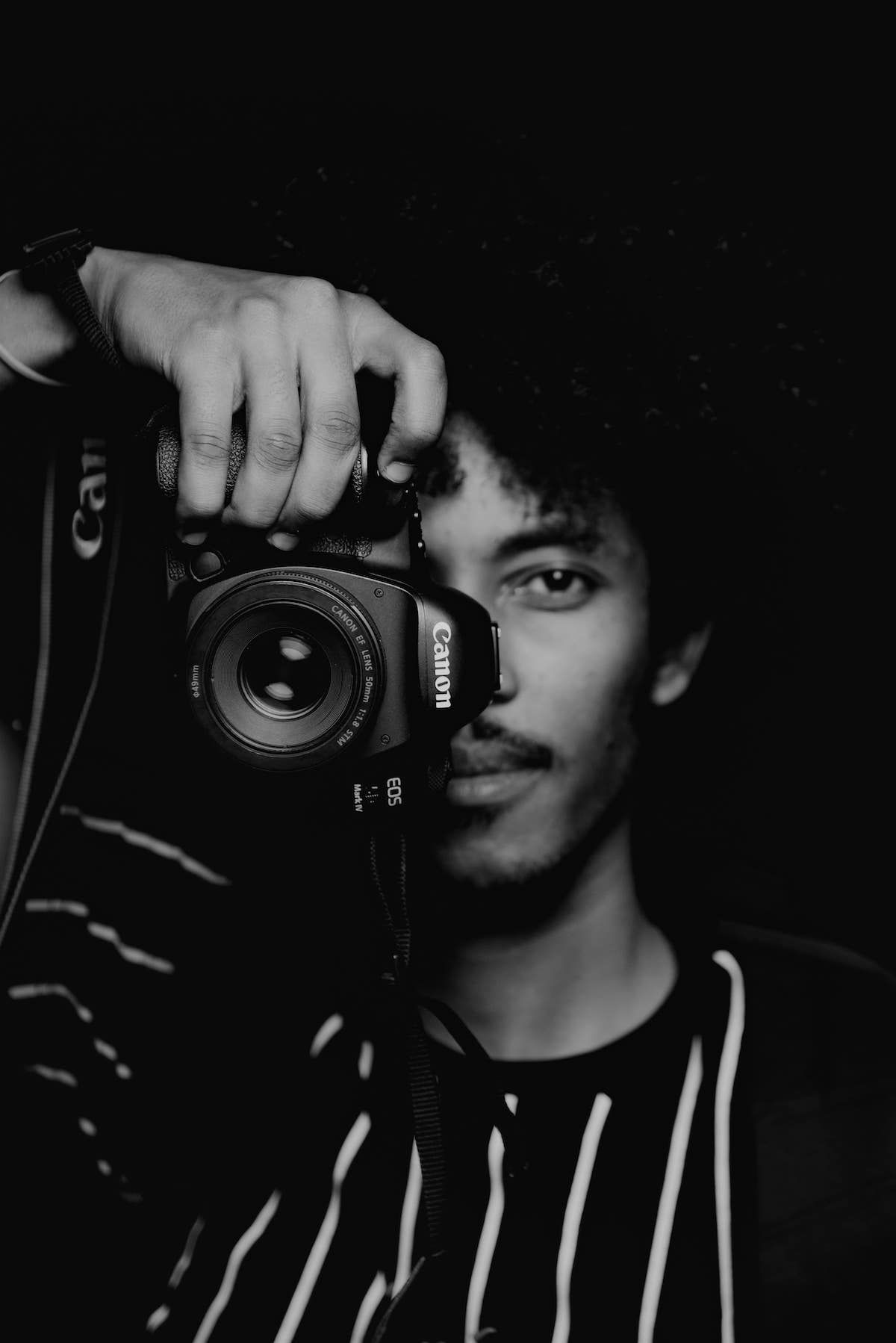
Become a better photographer
Some of the best all-rounder cameras for photography include The Fujifilm X-T4, Canon EOS R6, and Sony A7R IV.
Gearing up with the best camera is one thing. To become a true photography-evangelist, you need to understand the mechanisms of what goes behind the perfect picture.
Learn everything you need to know about photography and get started right away.
Should I rent a camera?
Rent Camera Gear: Access Pro Equipment
qqHXJy6AWlc
Camera Hire: Take Your Production to The Next Level
71PttfqWPXk
Camera Rental: Save Money with Wedio
5sHshmF1n_Y
About the instructors
FAQs
What is the best camera in the world?
Some of the best cameras in the world include:
·Canon EOS R5
·Fujifilm X-T4
·Canon EOS R6
·Sony A7R IV
·Sony A1
What camera do famous photographers use?
Some of the most used cameras by famous photographers include:
·Nikon D5
·Canon EOS 5D Mark III
·Nikon D810






















